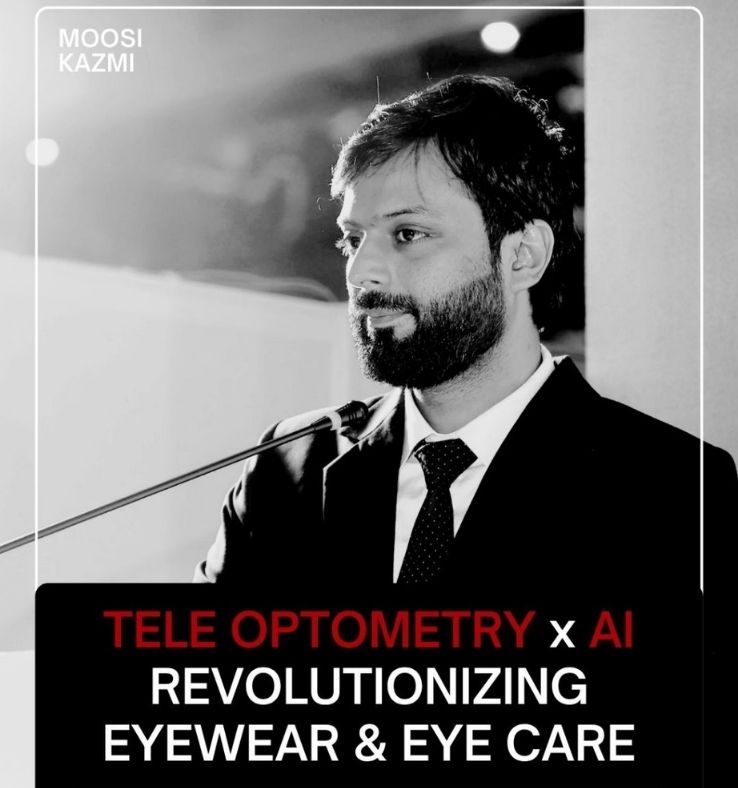The Multifaceted Role of AI in Revolutionizing Eyecare
1.jpg)
INTRODUCTION
1. Diagnosis and Screening
AI algorithms have significantly elevated the accuracy and speed of diagnosing eye diseases. Through the analysis of retinal images, AI can detect the earliest signs of conditions like diabetic retinopathy, age-related macular degeneration, and glaucoma. By identifying subtle abnormalities, AI enables prompt intervention and treatment, potentially saving patients' vision and reducing healthcare costs. AI has become an indispensable tool for ophthalmologists, enhancing their ability to diagnose and treat eye conditions.
2. Personalized and Recommended Treatment
Personalization in eye care has been revolutionized by AI. Machine learning algorithms can analyze a patient's visual needs and ocular characteristics to optimize lens design for contact lenses and eyeglasses. Moreover, AI plays a pivotal role in refining the precision of refractive surgeries like LASIK, providing precise corneal data for reshaping and achieving superior surgical outcomes tailored to each patient.
3. Telemedicine and Remote Monitoring
AI-driven telemedicine platforms have made eye care more accessible than ever before. Patients can now undergo virtual eye exams and consultations with eye care professionals, ranscending geographical limitations. Furthermore, remote monitoring of chronic eye conditions empowers doctors to intervene proactively when necessary, ensuring continuous care, minimizing disease progression, and enhancing patient convenience.
4. Drug Development
The drug development process for eye diseases benefits immensely from AI's ability to analyze vast datasets. AI algorithms identify potential drug candidates and predict their effectiveness in treating specific eye conditions. This expedited drug discovery process holds the promise of ovel and more effective treatments, offering hope to patients with challenging eye diseases.
5. Patient Management
AI-driven chatbots and virtual assistants provide patients with valuable information about their eye conditions, medication schedules, and appointment reminders. These AI systems improve patient adherence to treatment regimens, enhance communication with healthcare providers, and streamline the overall patient management process.
6. Surgical Assistance
In intricate eye surgeries, AI-assisted systems significantly enhance precision and safety. Real time feedback from AI during procedures, such as retinal surgeries, empowers surgeons to make informed decisions, optimize surgical outcomes, reduce complications, and expedite patient recovery.
7. Early Disease Detection and Prevention
AI's capabilities extend to analyzing patient data from diverse sources, including wearable devices. This enables the early detection of subtle signs indicating the onset of eye diseases. By detecting issues before they progress, AI supports early intervention, potentially preventing vision loss and preserving patients' quality of life.
8. Research and Education
AI has become an invaluable asset in ophthalmic research. It aids researchers in analyzing extensive datasets comprising eye images and medical records, accelerating the pace of discoveries in the field. Furthermore, AI-based educational tools provide interactive learning experiences and simulations, ensuring that future eye care professionals remain well-informed and proficient in the latest technologies and practices.
9. Drug Dosage Optimization
In conditions like glaucoma, where precise medication dosage is crucial, AI plays a pivotal role. It helps optimize medication dosages, striking a delicate balance between achieving the desired intraocular pressure and minimizing side effects. This personalized approach improves treatment effectiveness and patient comfort.
10. Public Health Screening
AI-driven screening programs are instrumental in public health initiatives aimed at detecting eye diseases on a larger scale. These programs identify individuals at risk, enabling prompt interventions and reducing the overall burden of eye diseases on public health systems. AI's efficiency in population-based screening holds immense potential for early disease detection and prevention.
Conclusion
AI's multifaceted role in eye care is transforming the field, offering unparalleled benefits in diagnosis, treatment, telemedicine, drug development, patient management, surgical precision, early detection, research, education, and public health screening. As AI continues to evolve and integrate further into ophthalmology, it promises to reshape the landscape of eye care, improving patient outcomes, expanding access to quality eye care services, and advancing our understanding of ocular health. The future of eye care is intricately intertwined with the capabilities of AI, making it an indispensable ally in preserving and enhancing vision health for people around the world.

.jpg)

.jpg)
.jpg)
.jpg)


1.jpg)



.jpg)
.jpg)



_(Instagram_Post).jpg)
.jpg)
_(1080_x_1080_px).jpg)


with_UP_Cabinet_Minister_Sh_Nand_Gopal_Gupta_at_OpticsFair_demonstrating_Refraction.jpg)
with_UP_Cabinet_Minister_Sh_Nand_Gopal_Gupta_at_OpticsFair_demonstrating_Refraction_(1).jpg)

.jpg)








.jpg)



.png)




